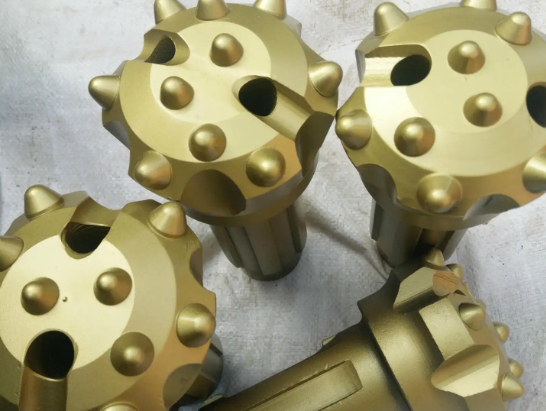Call us 0597-3217790
E-mall fujiankailong@gmail.com
Longyan Kailong Mining Equipment Co., Ltd.
The difference between sharp-toothed drill bit and ball-toothed drill bit
In the world of drill bits, sharp-toothed drill bits and ball-toothed drill bits are two common types. Although they are all tools used to punch holes in rock or other hard materials, they are significantly different in terms of structure, performance, and application.

Structural difference
The design feature of sharp-toothed drill bit is that its cutting teeth show sharp shape. This design allows the sharp teeth of the drill to cut into and break up rock more easily as it rotates. The sharp tooth design also means that when the bit is rotating, the contact area between the tooth tip and the rock is smaller, so the pressure per unit area is larger, which is conducive to improving the crushing capacity of the bit.
In contrast, the cutting teeth of the ball tooth drill are spherical or hemispherical. This design allows the ball teeth to form a larger contact area with the rock as the bit rotates, thereby reducing the pressure per unit area. The design of the ball teeth also helps to reduce the vibration and noise of the bit during rotation and improve the stability of the drilling.
Performance difference
Because of its sharp tooth tip design, it is more suitable for drilling in hard rock. Its powerful crushing ability allows it to quickly and efficiently penetrate hard rock layers. However, when the sharp-toothed drill bit breaks the rock, due to the small contact area and the large pressure per unit area, it is easy to cause the wear of the tooth tip, so the drill bit needs to be replaced more frequently.
The ball tooth drill bit is more suitable for drilling on medium hardness rocks. Its larger contact area and lower unit area pressure make it more stable for drilling operations. At the same time, the design of ball teeth can also reduce the wear of the bit and extend the service life of the bit.
Application difference
In practical application, the sharp-toothed drill bit and the ball-toothed drill bit have their own uses. Where fast penetration of hard rock layers is required, sharp-toothed drill bits are a better choice. In the need for a long time, stable drilling operations, the ball tooth drill bit is more suitable.
In addition, according to different rock types and drilling requirements, you can also choose different tooth shape, tooth spacing and tooth number of the drill bit to achieve the best drilling effect.
In general, the sharp-toothed drill bit and the ball-toothed drill bit have their own characteristics, and the choice of which type of drill bit needs to be comprehensively considered according to the specific rock conditions, drilling requirements and economic benefits.